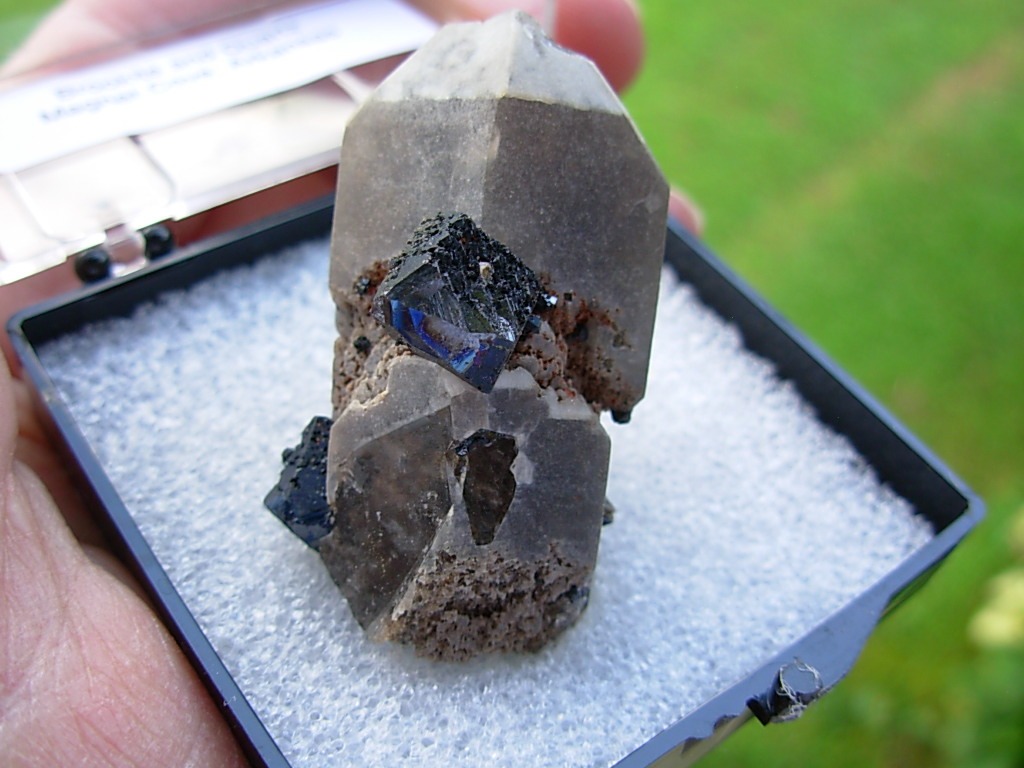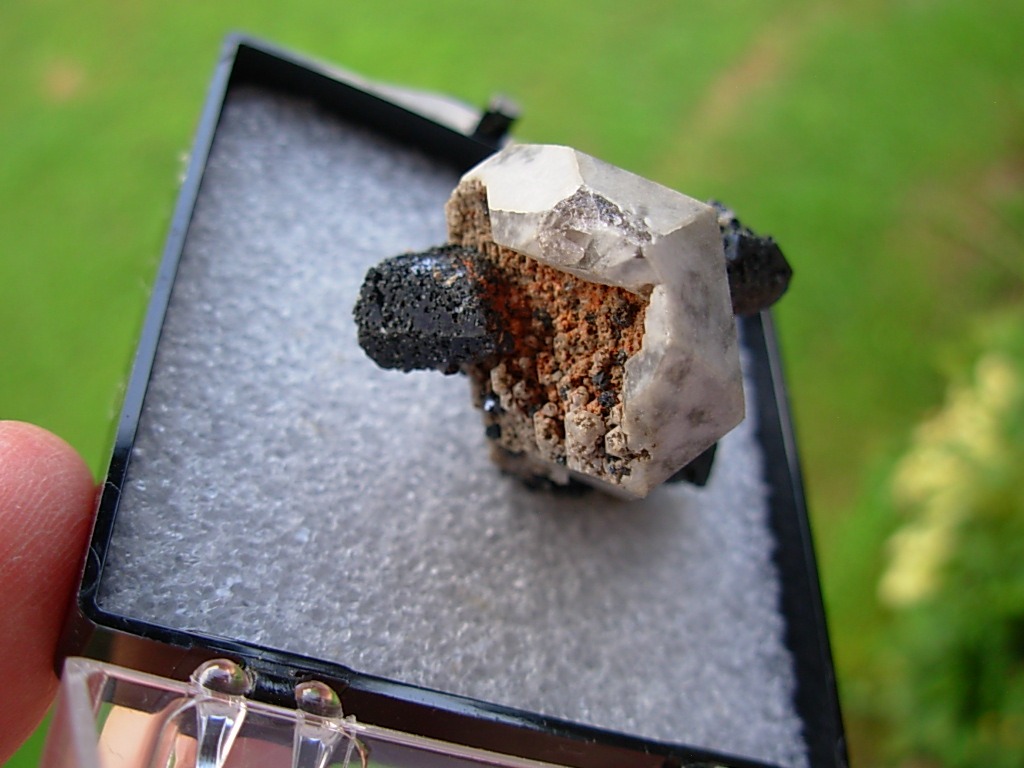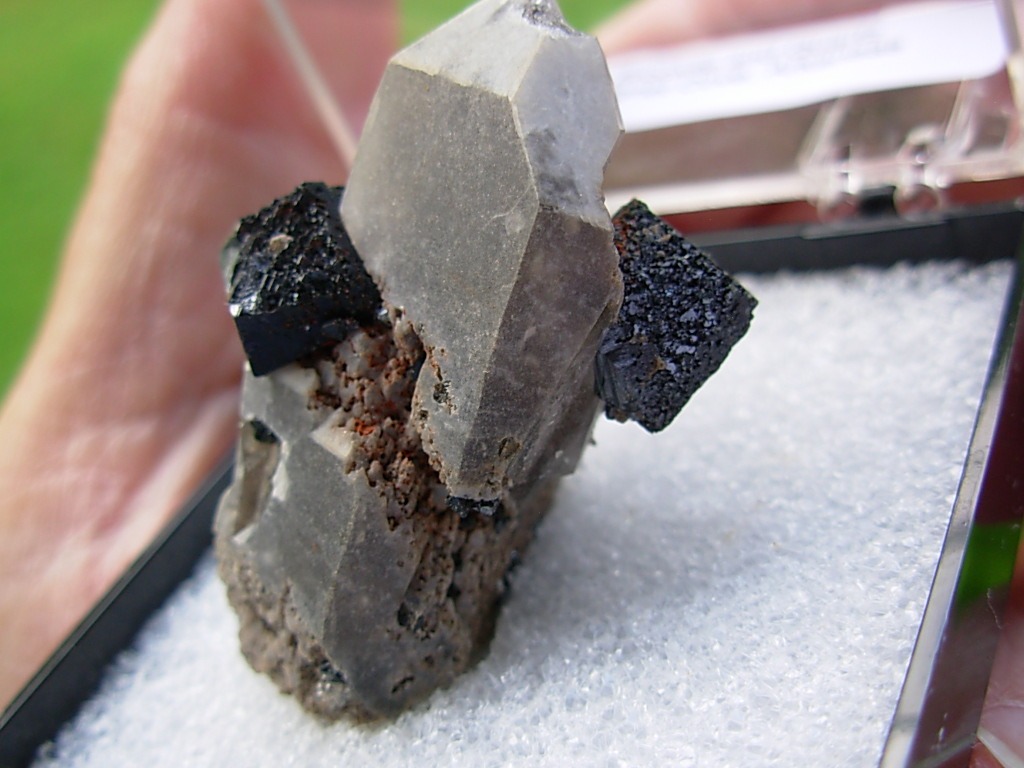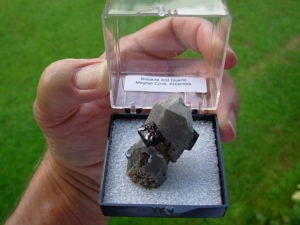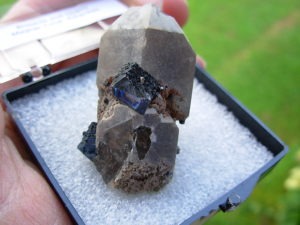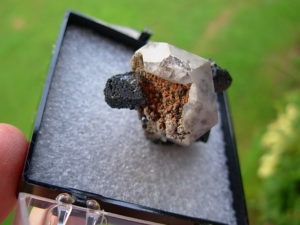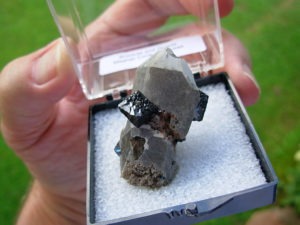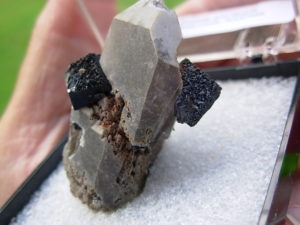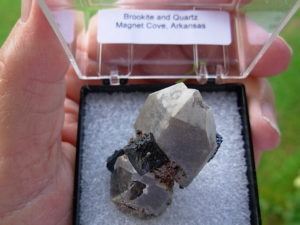Brookite
Brookite is a polymorph of titanium dioxide. Titanium dioxide occurs as three natural polymorphic mineral forms (minerals with the same chemicals, TiO2, but different structure) which are Brookite, Anatase and Rutile. Brookite is the rarest of these three minerals. Brookite almost always forms together with Quartz, and is occasionally entirely included within a Quartz crystal.
At temperatures around 932 degrees Fahrenheit (500 degrees Celsius), the Brookite structure will begin to transform into a Rutile structure. Rutile is the most common and the best known mineral of the three. Brookite and Rutile have the same color and luster and very nearly the same hardness and density. Brookite and rutile differ in crystal habit and cleavage. Brookite is named in honor of Henry J. Brooke (1771-1857), an English mineralogist who specialized in crystallography and discovered several new mineral species.
The only significant Brookite locality in North America is Magnet Cove, in the Ouachita Mountains, Hot Springs County, Arkansas, which is famous for its large black and often lustrous crystals. Magnet Cove derives its name from its basin-like shape and the presence of magnetite (lodestone) in the soil. Early settlers in the area discovered the magnetite when their plows and other tools attracted the abundant lodestones. The area is known for its abundance of odd minerals, including Magnetite usually in the form of Lodestone, Rutile, Anatase, Brookite and Perovskite.
Ref. Handbook of Mineralogy, Volume III (1997) and MSA at https://www.handbookofmineralogy.org and https://www.rockhoundingar.com/magcove.php and https://en.wikipedia.org/wiki/Brookite
Item # 1BROOK09164482
Brookite Crystals on Quartz from Magnet Cove

Here's a superb old stock specimen of Brookite on Quartz in a 2 x 2 x 1 -1/4" (51 x 51 x 31mm) display case. This was procured from a mineral dealer in Franklin, NC. It is from a 1970's collection. This specimen is glued to styrofoam base as was common during that period. This specimen comes from Magnet Cove, Arkansas. Brookite specimens from this classic locality are difficult to find today. After decades of being a prime spot for rockhounding for Brookite, most of the older well known classic localities are now closed to collectors.
Brookite on Quartz has been collected in the Magnet Cove area since before 1850. Attractive large crystals are scarce, whereas smaller crystals are abundant in the soils at several locations. Silica for the formation of grey smoky quartz came directly from the host rock, the Arkansas Novaculite.
There are four Brookite crystals on this specimen with the largest two measuring about 12.2 x 11.8mm and 12.8 x 9.2mm. The weight listed includes the display cube as well as the specimen.
This specimen weighs 1.4 oz (40g) and measures 1.6 x 0.9 x 0.9 inches (4.2 x 2.2 x 2.2cm)

